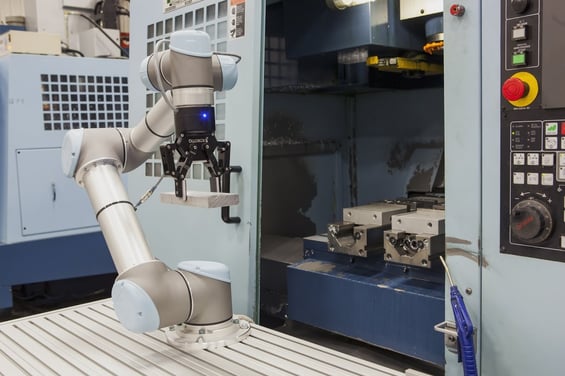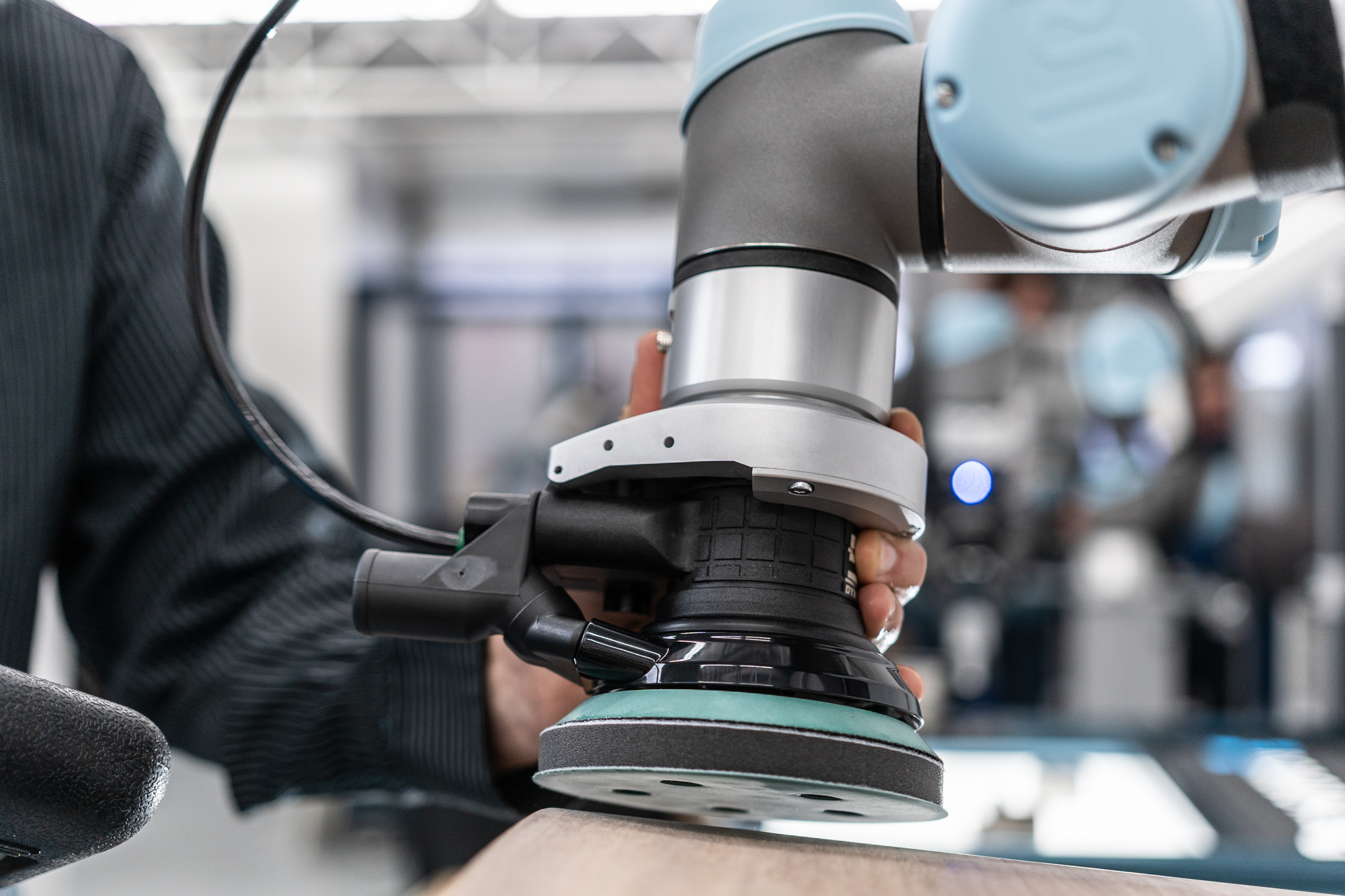Tips to Integrate a Collaborative Robot on Your Factory Workfloor

Posted on Aug 21, 2015 2:51 PM. 3 min read time
So you have a shop that is manufacturing product. Your goal is to do more with less, right? You want to increase your productivity and sustain (or increase) your quality. Your options are pretty limited, but there is still some hope! Collaborative robots are a good way to increase your productivity and relocate your employee to more complex jobs while letting the robot do the redundant, boring parts. But I know what you’re thinking... you say, all those videos of amazing robotic cells that feeds the machine by itself, it almost looks unreal. Then you should know that machine tending is way simpler than you think.

With the introduction of collaborative robots over the past few years, SME's (such as yours) have the opportunity to integrate a robot without too much hassle. So for a reasonable price (roughly $50,000) you can have a completely robotic solution that feeds your machine and is easy to integrate. These collaborative robots are easy to install, operate, maintain and do not need complex safety structures surrounding them. This means that your investment is repaid quite fast. Most SME's that are buying collaborative robots are paying off their investment in about 6 months.
The best way to convince someone how easy something is, is to show them how it’s done. So, watch the following video and see how intuitive it is to install, program and run the cobot.
To be honest we have installed robots in shops where no one has had any previous experience with robots before and they got into it really fast. (See examples in our Resource Center) It is easy to learn and at the end of the day it is just another tool to help you with your production. This way you can spend time doing other tasks rather than waiting for the end of the cycle. In workshops where machine cycle time is very short, you don't always have time to maintain the machine or do quality assurance, so using a robot will allow you this flexibility. Since the robot is safe to work alongside humans, you don't need to change you workfloor layout or to move your machine. You simply set the robot up in front of the CNC machine, teach it various points and trajectories and you are good to go. The worker can supervise the cobot and do other tasks.
What you need ? (AKA Your shopping list)
Here's what you need to get into robotic machine tending. Notice that there are various combinations that can get the job done. I don't pretend to know all of them, but with the following devices you should be able to have a good starting kit.
- A robot arm (there are various type of collaborative robots)
- An end-of-arm tool (An adaptive Gripper such as the 2-Finger 85 can work for all kinds of parts)
- A table (on wheels to move it around the shop; fixed if you know it's going to stays there for a while)
- A part ordering system (Keep it simple, 3D printed one are cheap and can be adapted easily)
- A part dispensing system (Also important to keep simple)
- Interface the robot with the machine (They need to talk to each other)
- Organize the cell (Make sure the cell is safe to use around humans, you need to do a risk assessment)
- Educate the employees (The robot will help them, not take their job)
- Optional
- Vision system
- Force torque sensors
- Conveyor belt
If you need further information on how to integrate a collaborative robot on your work floor follow the link below. It discusses the main steps you’ll need to look at to integrate your first robot in your production line.









Leave a comment